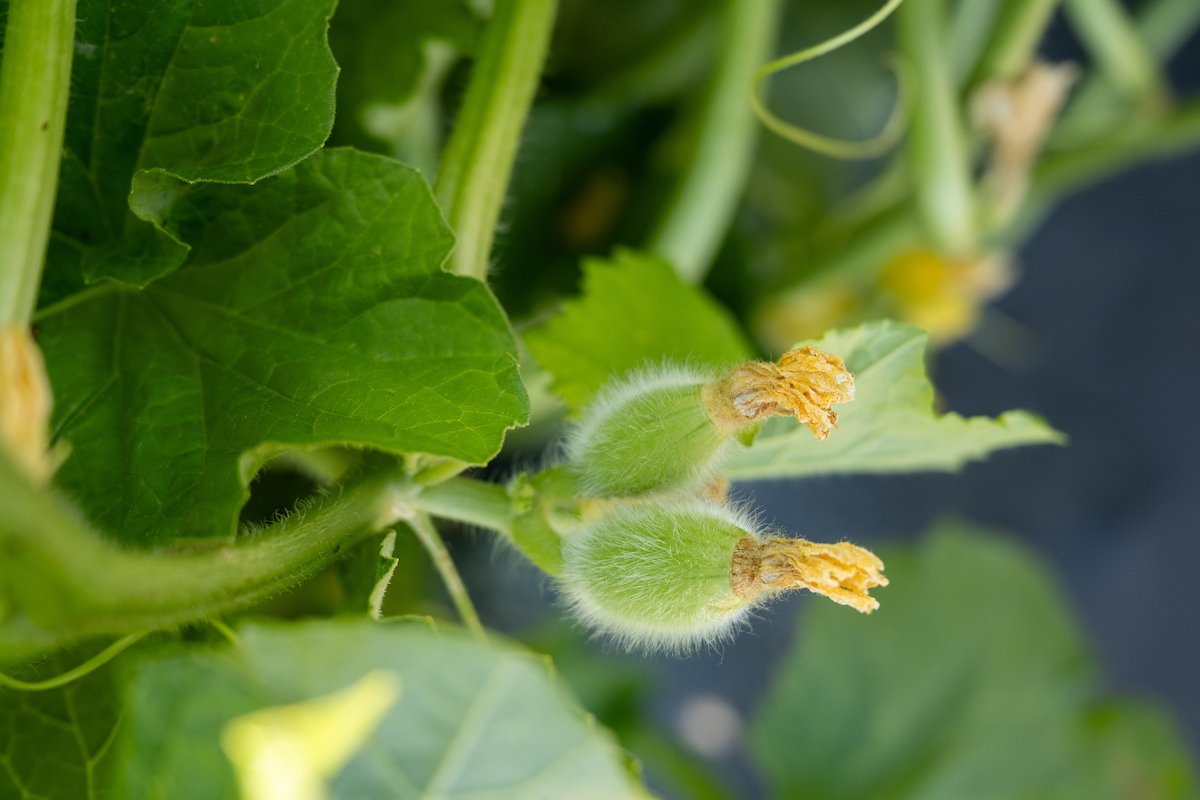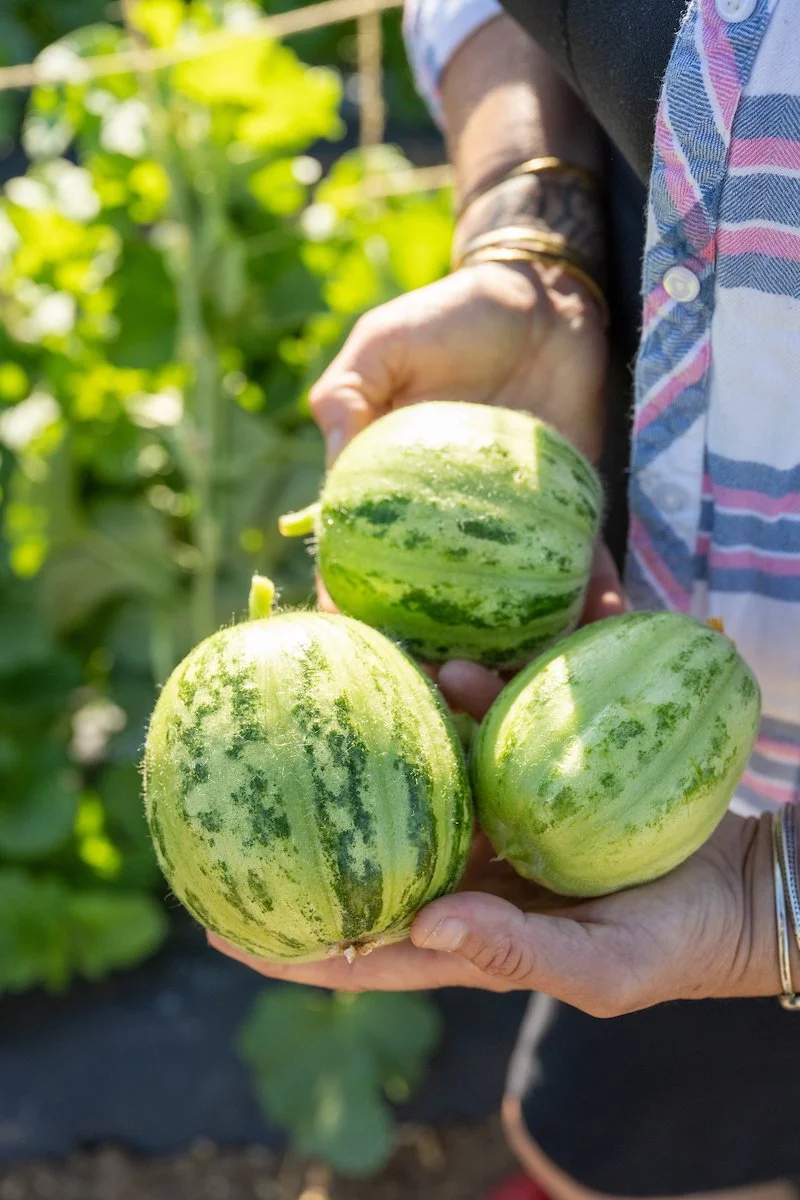Armenian Cucumber and Carosello
(Cucumis melo)
Boundaries organic research project led by Cornell University plant breeders Michael Mazourek and Phillip Griffiths. These novel vegetables are being trialed on organic farms across the Pacific Northwest, Northeast, and Southeast. The goal is to help farmers introduce new and exciting crops that align with changing consumer preferences - ultimately offering eaters healthier, more flavorful, and more diverse vegetable choices.
Although both are botanically a melon (Cucumis melo), they are harvested when immature and eaten like a cucumber (Cucumis sativus). Both are prized for their crisp texture, mild and refreshing flavor, and lack of bitterness. They thrive in hot climates where cucumbers often struggle, making it a valuable crop for regions with intense summer heat.
The Armenian cucumber, also known as yard-long cucumber, snake melon, or uri, is actually a melon that’s harvested young and eaten like a cucumber. It’s very popular in Middle Eastern, Mediterranean, and South Asian cuisines. They are usually eaten raw, sliced into salads or served with dips like yogurt or hummus. Its thin skin is tender enough to eat without peeling, and its seeds are soft and edible when young.
Carosello is an heirloom variety of melon traditionally grown in Southern Italy, particularly in Puglia, the hot and arid southeastern region of the country. Often eaten raw in salads or as a snack, carosello has delicate skin and tender flesh that can be slightly fuzzy or striped, with some types resembling zucchini or Armenian cucumbers.
Carosello is also part of a broader movement to preserve regional variety in Italian agriculture. Deeply tied to regional identity, different varieties reflect their specific local origins and are celebrated in Pugliese food culture. Its adaptability and flavor have made it increasingly popular among seed savers, gardeners, and specialty growers committed to sustaining traditional crops.
How to prepare:
Carosello are often simply sliced and tossed with olive oil, vinegar, and mint, mixed into tomato and onion salads, or served alongside cheeses, cured meats, olives and bread.
Armenian cucumbers are also most commonly eaten raw, but also pickled with garlic and herbs, and served as a condiment or appetizer alongside meats and cheeses. In Indian and Pakistani cuisines, it is sometimes lightly sautéed or stewed with spices (mustard seeds, turmeric, and chilies), in curries or a simple stir-fry.






